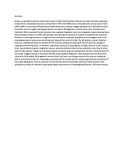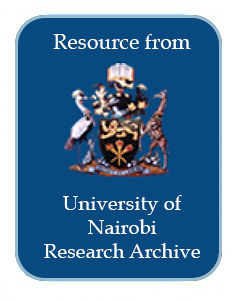Location
Our Vision is to be a world-class university committed to scholarly excellence.
Our Mission is to provide quality university education and training and to embody the aspirations of the Kenyan people and the global community through creation, preservation, integration, transmission and utilization of knowledge.
Core Values
In order to realize the above vision and mission, certain shared values shall be nurtured. There is great need for the University to be guided by the right values derived from the virtues and moral standards of the Kenyan and wider society.
Core Functions
Teaching and Learning: The university offers innovative , relevant and market driven academic programmes , both at undergraduate and postgraduate levels with inbuilt quality control systems the university also provides an environment and policy framework for undertaking high quality and relevant research
Members:
Resources
Displaying 126 - 130 of 298Changing Maasailand: Governance, land use and livelihoods transformation among East African pastoralists
Sustainable urban communities: challenges and opportunities in Kenya’s urban sector
During the last forty years, the economic and demographic structure of Kenya has become increasingly urban. In
the 1980s the urban population in the country grew at over
6.5 percent a year, more than double the rate for the
rural population. This expansion has occurred even under the most adverse conditions of repressed urban
investment, as was the case during the 1990s.
1
Presently, urban areas account for the predominant
share of
Enforcement of Environmental Crime Laws A Framework Training Manual for Law Enforcement Agencies
"This manual is intended for national trainers on environmental crime in Eastern and Southern Africa. It seeks to enable such trainers to equip police officers and other actors involved in fighting environmental crimes with knowledge and understanding of the nature of environmental crimes, environmental inspection and investigation, and prosecution of environmental crimes. Its methods are based specifically on a participant-centred learning approach to facilitate optimum participation of learners."
Major declines in the abundance of vultures and other scavenging raptors in and around the Masai Mara ecosystem, Kenya
Vulture population declines have been noted in West and Southern Africa, but have not been assessed in East Africa. Roadside transects conducted in 1976 and 1988 were compared with surveys done from 2003–2005 in and around Masai Mara National Reserve, Kenya. Staggering declines in abundance were found for seven of eight scavenging raptors surveyed. No Egyptian vultures were seen during recent transects.
Climate change and the emergence of helter-skelter livelihoods among the pastoralists of Samburu east district, Kenya
Climate change impacts livelihoods adversely in dry-lands of Northern Kenya in terms of longer and harsher droughts, shorter and intense precipitation and floods. Climate change interlocks with peoples life-worlds differently for different reasons. Understanding the foregoing can inform and make policy more relevant. What are the Samburu peoples discernment of climate change and how have they confronted it? The paper examines the Samburu perspectives of climate change and the resulting coping, adaptation mechanisms and practice, and their prospects.






